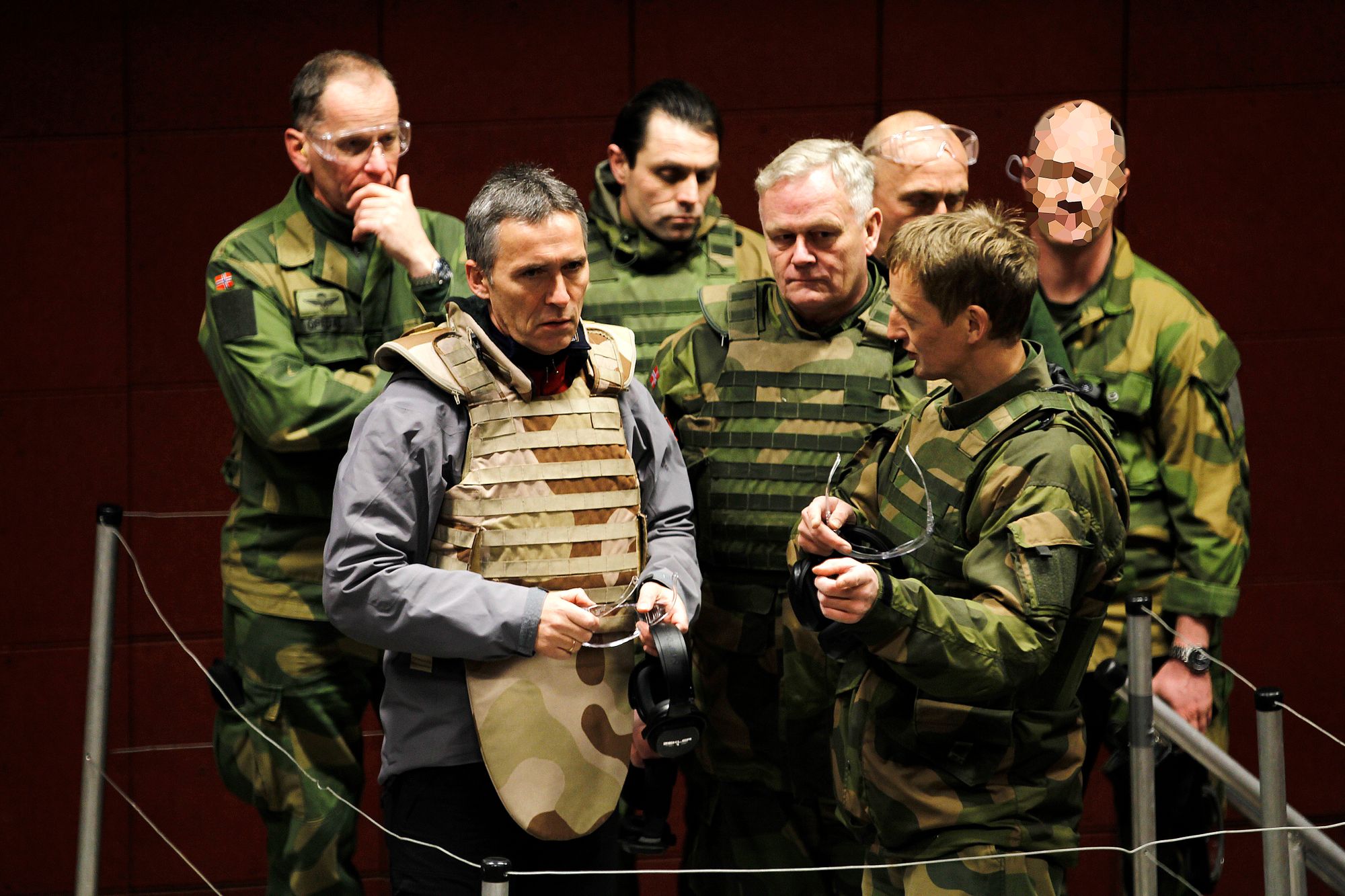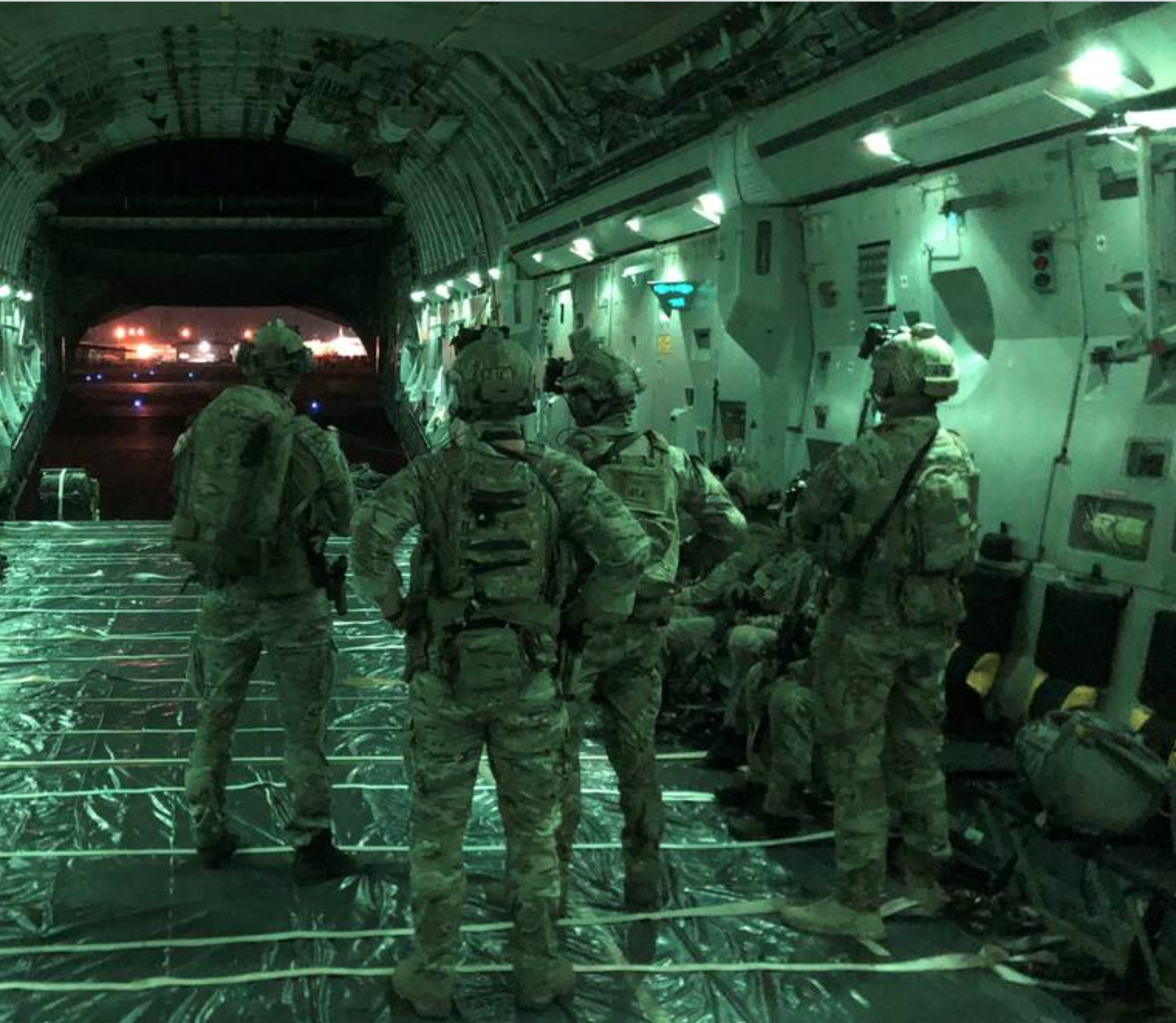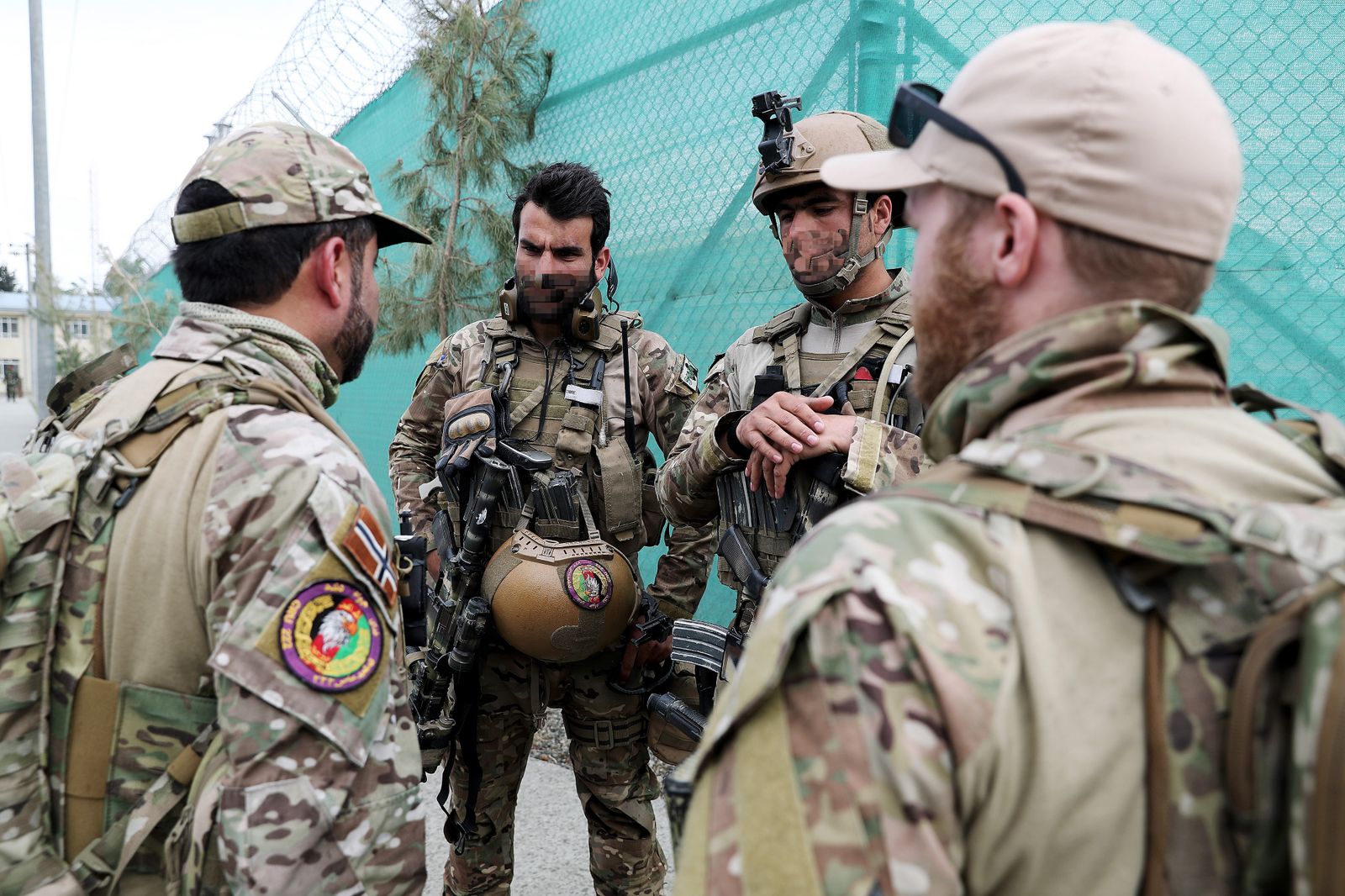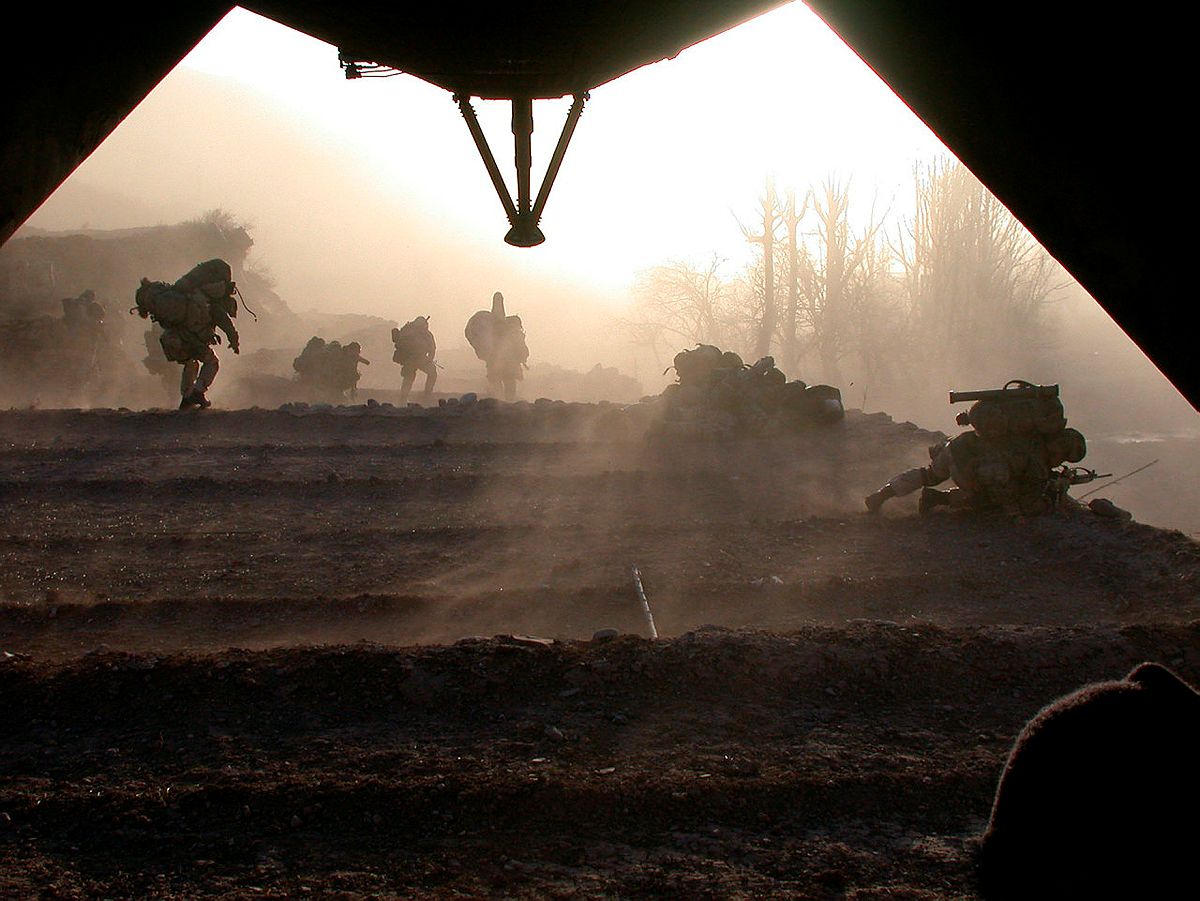Les del 1 av denne artikkelen her.
Even though all three Norwegian strategic national objectives, as they are outlined in this article, might be affected by the course of action (COA) presented below, there is no doubt that the COA is directed toward the third strategic national objective; to have a good relationship with international institutions and collective security organizations.
In order to fulfill this particular objective, we propose using NORSOF actively by doing MA in support of negotiations, DSSRs, and DDRs. By doing so, Norwegian strategic utility within NATO will be enhanced. A traditional notion of MA is that it is normally associated with training, mentoring, and assistance of military or police-like organizations or groups. This COA widens the spectrum of who may receive MA to include negotiators and intelligence agencies. This is not something completely new; in reality, this proposed COA represents a renewed, enhanced, and more intentional Norwegian focus on interagency support to negotiations, DSSRs, and DDRs.
Since the security environment is constantly changing, and since the level of experience with this type of operation is limited, it is challenging to paint a picture of how far a COA involving NORSOF in support of negotiation, DSSRs, and DDRs could reach and what effects could be expected. That is why, before the COA is outlined briefly, we lay out some history of how the Norwegian government has worked as negotiators in the past and how the Norwegian military has worked to support these types of activities. The intent is to give an idea of how far this proposed COA might reach.
Strategic Context—Norway as Negotiator
As stated earlier, Norway is often described as a “superpower” when it comes to conflict resolution; Norway has a well-developed diplomacy, a reputation for neutrality, and the financial resources, patience, endurance, and network for this activity (Hanssen-Bauer, 2005). Since 1993, Norway has been involved in more than 20 peace processes or attempts to reconcile groups in conflict (Norwegian Ministry of Foreign Affairs, 2016).
In 1999, Norway was invited by Sri Lankan authorities and the Liberation Tigers of Tamil Eelam to act as a facilitator for negotiations between the parties. Norway was asked to bring the parties to the table and assist with negotiations and communication between them, as well as with the outside world. The parties agreed to a cease-fire in 2002, but it broke down, and there was a bloody end to the conflict in 2009 (Sørbø, Goodhand, Klem, Nissen, & Selbervik, 2011). One of the more tangible successes in Norwegian peace diplomacy was the peace agreement in Guatemala in 1996, which was reached after years of negotiations. It came in the wake of the groundbreaking Oslo Agreement peace treaty between Israel and the Palestinians three years earlier. Despite the later collapse of the Oslo Agreement, this was a diplomatic triumph in the Middle East that was perceived as a strategic victory for a small nation.
The 2005 peace agreement in Sudan confirmed Norway’s reputation as a small superpower in peace. The cooperation with the United States was especially close. A favorable side-effect was that Norwegian “soft power” opened doors for Norwegian politicians into the “hard power” in Washington. In the case of Afghanistan, Norway established contacts with Taliban leadership in 2007 and worked actively to influence internal processes in Washington until 2011, when the United States for the first time called for negotiations with the Taliban (Godal et al., 2016). Norway mediated contact between the parties and conducted high-level meetings with the Taliban leadership in Pakistan, Oslo, and Doha, Qatar (Godal et al., 2016).
In the case of Libya, Norwegian diplomats were involved in secret negotiations with Muammar al-Gadhafi’s son from 2010. Allegedly, representatives of the rebels and Saif Gadhafi met about 30 times in Tunisia, Istanbul, Paris, and Oslo without reaching an agreement before Operation Unified Protector reached its most intense phase in 2011 (Lysberg, 2016).
Norway has also been involved in the peace and reconciliation efforts in Colombia for decades. Norway is the official facilitator, along with Cuba, for the ongoing peace process between the Colombian government and FARC-EP. Negotiations were launched in Oslo in October 2012, and the talks have since taken place in Oslo and Havana (Royal Norwegian Embassy in Manila, n.d.). This resulted in a peace agreement between FARC and the Colombian president, Juan Manuel Santos, signed in June 2016 (UN News Center, 2016). A number of hostages have been released during this process, often with direct Norwegian involvement (Regjeringen 2013; 2015).
Norwegian authorities believe negotiations are worth the effort and risk; of the 61 conflicts that ended the last 35 years, 77% did so through a peace agreement, and 16.4% through the military victory of one of the parties (Fisas, 2016, p. 9). The culture of negotiation is a reality, and Norway is a major part of it. However, as Helgesen (2007) argued, Norway struggles to square the circle of being a loyal military team player, helping to demonstrate a united international front against terrorism, and at the same time wanting to support negotiated solutions to conflicts where one side is identified as a terrorist organization.
Strategic Context—The Norwegian Military Working in Support of Negotiations and DDRs
During the negotiations on Sri Lanka, Norwegian military experts helped work out the military technicalities of de-escalation, advanced positions, and front lines (Sørbø et al., 2011, p. 36). In the Balkans, NORSOF acted as liaisons and advisors between the peacekeeping force and the former warring parties. The concept was called “Joint Commission Observers” (JCO) and was founded by General Sir Michael Rose. NORSOF established contact between hard-to-reach decision-makers from both parties and mediated contact, often preventing episodes that could have turned into open conflict (Melien, 2012, p. 318). Other SOF roles in the Balkans were to assess the disposition and strengths of specific forces, often through direct liaison with warring commanders, and locating and marking suitable drop zones for UN food drops (Oliver, 2005). NORSOF also have organizational experience from DDR processes, both in the Balkans and in Afghanistan. One example of a disarmament operation was Operation Essential Harvest in Macedonia in 2001, in which NORSOF contributed to the allied collection of over 50,000 weapons (Bakkeli, 2013).
Concept of Operations for MA in Support of Negotiations, DSSRs, and DDRs
The concept of this type of MA operation is based on the following argument: the NORSOF community is positioned in the middle of this seeming contradiction between (military) counterterrorism and (civilian) negotiations, and thus, potentially may help bridging it. NORSOF have capabilities that may support one or both of these lines of effort. One way of conceptualizing SOF is between Intelligence and State, as shown in Figure 4.

In the Norwegian context, the Norwegian Intelligence Service provides full spectrum intelligence support to the Norwegian government, including support for negotiations (Godal et al., 2016, p. 138). The Norwegian Ministry of Foreign Affairs engages in overt and clandestine diplomacy and negotiations, and development and aid through government and non-government organizations. SOF’s role, in contrast, is to deal with the armed “Others”—whether foreign militaries (e.g., Foreign Internal Defense (FID)) or supported groups (e.g., Unconventional Warfare (UW)), or anti-state/system actors like terrorists (e.g., SR/DA). All of these are important actors in negotiations, DSSRs or DDRs.
COA Outline
In this interagency COA, the Ministry of Foreign Affairs is the supported agency; the Norwegian Intelligence Service and NORSOF are supporting agencies. Through the interagency liaison network in Oslo and at select embassies, NORSOF MA experts are providing MA to the Ministry of Foreign Affairs and the Norwegian Intelligence Service in support of specific negotiation efforts.
NORSOF can increase the reach and capability of the negotiating teams through their contacts in the GSN. The GSN offers alternative access to critical information (especially Host Nation Information [HNI] and Friendly Forces Information Requirements [FFIR]). The GSN offers a global, physical, and potentially clandestine SOF infrastructure that may be used for negotiation purposes, and SOF resources that enable physical access to hostile, denied, or politically sensitive areas. NORSOF provide MA expertise to negotiating teams, especially with regards to assessments on what is feasible and possible to achieve through traditional DDR processes, in which MA is a critical component.
In “Second-Generation DDR,” NORSOF supports activities that can be implemented when the preconditions for traditional DDR are not in place (UN Department of Peacekeeping Operations, 2010). This includes the establishment of liaison between parties in semi/non-permissible environments, quickly securing activity and infrastructure important for the negotiating efforts, and supporting local negotiations programs using an evidence-based approach, much like recent SOF efforts in Afghanistan (UN Department of Peacekeeping Operations, 2010).
During negotiated cease-fires, NORSOF may assist in assessing the disposition of specific forces (e.g., strengths, deployments, and moral). NORSOF may contribute to relative certainty, which is the intent of SR (Westberg, 2016, p. 27). NORSOF may also establish liaison with local commanders to ensure the mapping process can be completed. NORSOF may locate and mark suitable drop zones for food/medical drops, ensuring that the much-needed aid reaches the right people, in order to establish trust during negotiations. NORSOF also has a “Role 2+” hospital platoon that may be inserted by airdrop, both the infrastructure and the surgeons (Ege, 2012). This may be used as a high-end confidence-building measure to support cease-fires and establish trust during negotiations. NORSOF may increase the Hostage Rescue Operation (HRO) readiness and forward-deploy HRO capabilities during high-risk negotiations. NORSOF may also support the build-up of Escape & Evasion (E&E) networks for civilian actors engaged in the negotiation efforts, and provide relevant E&E training in Norway.
If the end-result of a peace agreement is that one or more of the opposing actors engages in some kind of Security Sector Reform (SSR), NORSOF may assume traditional MA roles, directed at several levels of the advised/mentored/partnered organization, also known as vertical implementation of MA (Kristiansen & Hedenstrom, 2016, pp. 30–31).
Conclusion—Recommendations and Implications
NATO’s requirement for new, more cost-effective military assistance (MA) operations directed at key strategic objectives, as described by Webb (2015), can be met by using different nations’ SOF deliberately to conduct specific MA operations within the field of expertise of that particular nation’s SOF. This will potentially lead to enhance strategic utility of NATO SOF, and the strategic utility of the particular nation’s SOF will also increase.
SOF leadership should emphasize educating and encouraging decision-makers on the smart use of SOF. Presenting different and new concept of operations—which is in line with existing vital security issues and concerns—with the intention of making these concepts part of national policy is one way to do it. At least from a NATO perspective, the total number of fields of SOF expertise will represent a more comprehensive collection of capabilities than NATO possesses today. A future analysis of NATO SOF MA capabilities might show that some capabilities are lacking because some fields of expertise are not covered. If this becomes the case, it is then possible for NATO to incentivize nations to acquire these capabilities on behalf of NATO. From our point of view, security interests, national strategic objectives, and potential national niches should be considered when new capabilities are to be generated.
In this regard, Norway is an example of a nation that could offer a unique capability to NATO within MA. Norway’s security concerns, strategic objectives, national niches, and potential for interagency cooperation show us that Norway could be a good fit for conducting MA operations in support of negotiations, DSSRs, and DDRs on behalf of NATO. By doing this, Norway will still “punch above its weight” and keep its reputation of being an effective negotiator and conflict-solver in the international arena, while several elements of the Norwegian interagency system—including NORSOF—would experience an enhanced level of strategic utility, and most important, NATO’s total strategic utility will be enhanced.
To make this possible, NORSOF must prioritize it. As suggested by Kristiansen and Hedenstrom (2016), NORSOF must adjust its doctrine, review its organizational setup, establish relevant training and educational programs, and potentially make some changes in its selection and HRM-system (pp. 81–99). Building a network of MA practitioners throughout NORSOF will be key, because it is not likely that NORSOF will grow too much in size.
Also important to make this possible is that NATO acknowledges that this is one of the capabilities Norway is contributing with. NATO cannot demand “everything always from everyone.” An approach like this should force decision-makers to appreciate the opportunities, but also realize the limitations, that lie within SOF.
Implications
NATO is a coalition. And within a coalition, objectives differ, interests differ, capabilities differ, and political wills differ. These facts represent some challenges. The pattern of politicians committing troops to operations by numbers, without giving the military either a concrete mission or a chance to analyze whether the number of troops committed will represent a relevant military solution in a strategic context, must end. The tradition of military officers hiding behind the Clausewitzian trinity, while blaming politicians for badly constructed policies, the lack of appreciation of strategy as the bridge between the military and policy, as described by Gray (1999), and the intense focus on using a direct approach whenever the opportunity shows itself must also end. Politicians and decision-makers need to pay attention to what military officers are saying, and military officers need to appreciate the complex challenges the security environment actually represents. Understanding how to build and execute relevant strategies is an important element of this. Obviously, this needs to happen simultaneously.
Nevertheless, we do believe the fastest way ahead toward a relevant solution to this challenge is embracing McChrystal’s model of Team of Teams. Doing so will most likely lead to better education of military officers on how to communicate with decision-makers and politicians, in order to build the trust needed for politicians and decision-makers to actually ask the right questions of the military, request the right analyses, and give the military relevant and achievable missions. As of now, when a military officer enters the military strategic leadership, he or she has most likely worked in completely different environments from other individuals from other organizations and agencies that the officer will encounter. This is something to be aware of. To be honest, the traditional shaping of military officers is not the best fit for producing diplomats or people who are able to communicate like one. And on the other side, civilians are not usually shaped in order to understand how military officers view the world and communicate. SOF represent something different, something flexible and an entity that may overcome these challenges, on behalf of the interagency team at large.
Foto: NORSOF building trust with politicians/decision makers, NORSOC NCO and Stoltenberg (Torbjorn Kjosvold / Forsvaret)
This article has been published in SWJ
[1] SR as defined in NATO (2013): “SR is conducted by SOF to support the collection of a commander's Priority Intelligence Requirements (PIRs) by employing unique capabilities or Joint Intelligence, Surveillance, and Reconnaissance (JISR) assets. As part of the Allied theatre INTEL collection process, SR provides specific, well-defined, and possibly time-sensitive information of strategic or operational significance. It may complement other collection methods where constraints are imposed by weather, terrain-masking, hostile countermeasures, or other systems’ availability. SR places persistent ‘eyes on target’ in hostile, denied, or politically sensitive territory. SOF can provide timely information by using their judgment and initiative in a way that technical JISR cannot. SOF may conduct these tasks separately, supported by, in conjunction with, or in support of other component commands. They may use advanced reconnaissance and surveillance techniques, JISR assets and equipment, and collection methods, sometimes augmented by the employment of indigenous assets.”
[2]DA as defined in NATO (2013): “DA is a precise offensive operation conducted by SOF which is limited in scope and duration in order to seize, destroy, disrupt, capture, exploit, recover, or damage high value or high pay-off targets. DA differs from conventional offensive actions in the level of risk, techniques employed, and the degree of precision utilized to create a specific effect, and usually incorporates a planned withdrawal from the immediate objective area. DA is focused on specific, well-defined targets of strategic and operational significance, or in the conduct of decisive tactical operations. SOF may conduct DA independently, with support from conventional forces, or in support of conventional forces. Activities within DA can include: raids, Ambushes, Assaults, Terminal Guidance Operations, Recovery Operations, Precision Destruction Operations, and Opposed boarding operations” (p. 2-3).
Bibliography
Bakkeli, T. (2013). Krigere og Diplomater—På innsiden av Forvarets Spesialkommando [Warriors and diplomats: Inside the Norwegian Special Operations Forces] (1st ed.). Oslo, Norway: Kagge Forlag.
Beadle, A. W., & Diesen, S. (2015). Global trends toward 2040: Implications for the Norwegian Defence Forces’ roles and relevance. Oslo, Norway: FFI. Retrieved from http://www.ffi.no/no/Rapporter/15-01452.pdf
Berg-Knutsen, E., & Roberts, N. (2015). Strategic design for NORSOF 2025. (Technical report). Monterey, CA: Naval Postgraduate School. Retrieved from http://calhoun.nps.edu/bitstream/handle/10945/47444/NPS-DA-15-001.pdf?sequence=1&isAllowed=y
Carvalho, B., & Lie, J. H. S. (2014). A great power performance: Norway, status, and the policy of involvement. In B. Carvalho & I. B. Neumann (Eds.), Small states and status seeking: Norway’s quest for international standing (pp. 56–72). New York, NY: Routledge.
Domrose, H.-L. (2015). COM JFC BS’ NATO SOF Symposium Speech 2015: The Russian hybrid warfare model; Using SOF for “Hybrid Defense.” Mons, Belgium: NSHQ, 2015.
Ege, R. T. (2012, September 1). Here are Norway’s toughest medical doctors. Verdens Gang. Retrieved from http://www.vg.no/nyheter/innenriks/forsvaret/her-er-norges-toeffeste-leger/a/10045344/
EU NAVFOR Somalia. (n.d.). Missions. Retrieved from http://eunavfor.eu/mission/
Expert Commission on Norwegian Security and Defence Policy. (2015). Unified effort. Oslo, Norway: Norwegian Department of Defense.
Fisas, V. (Ed.). (2016). Yearbook of peace processes. Barcelona, Spain: Icaria Editorial.
Gray, C. S. (1999). Modern strategy. Oxford, England: Oxford University Press.
Gray, C. S. (1996). Explorations in strategy. Santa Barbara, CA: Praeger.
Gray, C. S. (2015). Tactical Operations for Strategic Effect: The Challenge of Currency Conversion. Tampa: Joint Special Operations University Press.
Godal, B. T., et al. (2016). A good ally: Norway in Afghanistan 2001–2014. Oslo, Norway: Norwegian Government Administration Services.
Haaverstad, T. (2011). Defense security sector reform: Organization, intentions, and results (Master’s thesis). Norwegian Defense College, Oslo, Norway. Retrieved from https://brage.bibsys.no/xmlui/bitstream/handle/11250/100020/Masteroppgave%20FHS%20-%20Haaverstad%20Terje.pdf?sequence=1
Hammersmark, J. I. (2010). The development of Norwegian Special Forces: Symbolic or functional utility?(Master’s thesis). Forsvarets stabsskole, Oslo, Norway. Retrieved from https://brage.bibsys.no/xmlui/bitstream/handle/11250/99868/Hammersmark,%20John%20Inge.pdf?sequence=1
Hanssen-Bauer, J. (2005, October 28). The Norwegian “model” for conflict resolution [Speech]. Lisbon, Portugal.
Helgesen, V. (2007). How peace diplomacy lost post 9/11: What implications are there for Norway? (Oslo Files on Defence and Security, no. 3). Oslo, Norway: Norwegian Institute for Defence Studies.
Hickey, G. C., & Davison, W. P. (1965). The American military advisor and his foreign counterpart: The case of Vietnam. Santa Monica, CA: RAND Corporation.
Hoffman, F. G. (2009). “Hybrid warfare and challenges.” Joint Force Quarterly, 52(1). Retrieved from http://ndupress.ndu.edu/portals/68/Documents/jfq/jfq-52.pdf
Johansen, I. (2015). Special Operations Forces: A weapon of choice for future operations? In P. M. Norheim-Martinsen & T. Nyhamar (Eds.), International military operations in the 21st century: Global trends and the future of intervention (pp. 97–115). New York, NY: Routledge.
Kihl, T.-E., & Carling, J. (2015). The global Special Operations Forces network from a partner-nation perspective (Capstone report). Naval Postgraduate School, Monterey, CA. Retrieved from http://calhoun.nps.edu/bitstream/handle/10945/44594/14Dec_Kihl_Carling.pdf?sequence=1
Kiras, J. D. (2006). Special operations and strategy: From World War II to the War on Terrorism. London, England: Routledge.
Kristiansen, M., & Hedenstrom, A. (2016). NORSOF military assistance capability development (Master’s capstone project). Naval Postgraduate School, Monterey, CA. Retrieved from http://calhoun.nps.edu/bitstream/handle/10945/50557/16Sep_Hedenstrom_Kristiansen.pdf?sequence=1
Kristoffersen, E. (2015). Small states, smart solutions: Investing in National Joint Special Operations Command[Strategy Research Project]. United States Army War College, Carlisle, PA.
Langved, A. (2016, February 3). Interview with SACEUR General Philip M. Breedlove, titled: “Bakkestyrker Er Nøkkelen Til Suksess” (Ground forces is the key to success). Dagens Næringsliv. Retrieved from http://www.dn.no/nyheter/utenriks/2016/02/02/2144/Politikk/-bakkestyrker-er-nkkelen-til-suksess
Lysberg, M. (2016, January 25). Demanded Gadaffi’s retreat. Klassekampen. Retrieved from http://www.klassekampen.no/article/20160125/ARTICLE/160129928
McChrystal, G. S., Collins, T., Silverman, D., & Fussell, C. (2015). Team of teams: New rules of engagement for a complex world. New York, NY: Penguin.
McRaven, W. H. (1996). Spec ops: Case studies in special operations warfare; Theory and practice. New York, NY: Ballantine Books.
McRaven, W. H (2004), Special Operations: The Perfect Grand Strategy, chapter in: Horn, B., Last, D. M., & Taillon, J. P. D. B. (Eds.). (2004). Force of Choice: Perspectives on Special Operations. Queen's University School of Policy Studies.
Melien, T. J. (2012). Vaare Hemmelige Soldater. Norske Spesialstyrker 1940–2012 [Our secret soldiers: Norwegian Special Operations Forces 1940–2012]. (1st ed., Vol. 1). Oslo, Norway: Spartacus, 2012.
NATO. (2013). Allied joint doctrine for special operations (AJP-3.5, Version A, Edition 1). Brussels, Belgium: NATO Standardization Agency.
NATO. (2015). NATO-Georgian Joint Training and Evaluation Center (JTEC). Retrieved from http://www.nato.int/nato_static_fl2014/assets/pdf/pdf_topics/20150827_150827-jtec-georgia.pdf
NATO. (2017). Member countries. Retrieved from http://www.nato.int/cps/is/natohq/topics_52044.htm
Norwegian Government. (2013, July 26). Norway’s engagement in peace processes since 1993. Retrieved from https://www.regjeringen.no/en/topics/foreign-affairs/peaceandreconciliation-efforts/innsiktsmappe/peace_efforts/id732943/
Norwegian Ministry of Foreign Affairs. (2016, January 27). Choices in Norwegian foreign and security policy. Retrieved from https://www.regjeringen.no/no/tema/utenrikssaker/sikkerhetspolitikk/meldst_veivalg/id2472157/
Oliver, I. (2005). War and peace in the Balkans: The diplomacy of conflict in the former Yugoslavia. London, England: I. B. Tauris.
Oslo Militaere Samfunn. (2014). Kontreadmiral Nils Johan Holte Sjef Forsvarets spesialstyrker, “Manus til Tale i OMS den 31 mars 2014” [RADM Nils Johan Holte, Commander NORSOCOM "Speech for OMS 31 March 2014"]. Retrieved from https://www.oslomilsamfund.no/wp-content/uploads/2017/01/2014-03-31-Holte.pdf
Regjeringen. (2013, October 27). U.S. citizen released in Colombia with Norwegian help. The Norwegian Government. Retrieved from https://goo.gl/QYYiL3
Regjeringen. (2014, November 4). Allmenn Verneplikt [Mandatory conscription]. Retrieved from https://www.regjeringen.no/no/tema/forsvar/innsikt/allmenn-verneplikt/id2009109/
Regjeringen. (2015, July 19). Colombian officer released with Norwegian assistance. The Norwegian Government. Retrieved from https://goo.gl/AqE0ZQ
Robinson, L. (2013). The future of U.S. Special Operations Forces (Council Special Report No. 66). New York, NY: Council on Foreign Relations. Retrieved from https://www.cfr.org/sites/default/files/pdf/2013/03/Special_Operations_CSR66.pdf
Rothstein, H. (2007). Less is more: The problematic future of irregular warfare in an era of collapsing states. Third World Quarterly, 28(2), 275–294.
Royal Norwegian Embassy in Manila. (n.d.). Norwegian envoys share experiences from the peace process in Colombia. Retrieved from http://goo.gl/LNbjvt
Simons, A. (2017). 21st-Century Challenges of Command: A View from the Field, Strategic Studies Institute and U.S. Army War College Press, Carlisle, Pennsylvania. Retrieved from https://ssi.armywarcollege.edu/pubs/display.cfm?pubID=1353
Simons, A. (2012). SOF 2030: An NPS Defense Analysis seminar report, 2011 long term strategy seminar(Monterey, CA: Naval Postgraduate School).
Simons, A. (2017). “Scalpel” or “Easy Button”? Neither–And some further considerations. In G H. Christensen (Ed.), Interdisciplinary Perspectives on Special Operations Forces (pp. 168–188). Copenhagen, Denmark: Royal Danish Defence College. Retrieved from http://fak.dk/publikationer/Documents/Conference%20Proceedings%20No%204%20(a)%202017%20NET.pdf
Sørbø, G., Goodhand, J., Klem, B., Nissen, A. E., & Selbervik, H. (2011). Pawns of peace: Evaluation of Norwegian peace efforts in Sri Lanka,1997–2009. Oslo, Norway: NORAD Evaluation Department. Retrieved from https://goo.gl/WrgqzK
Spulak, R. G. (2009). A theory of special operations: The origin, qualities, and use of SOF. Military Technology, 33 (Special issue), 23–28.
Tucker, D., & Lamb, C. J. (2007). United States Special Operations Forces. New York, NY: Columbia University Press.
United Nations Department of Peacekeeping Operations, Office of Rule of Law and Security Institutions, Disarmament, Demobilization, and Reintegration Section. (2010). Second generation disarmament, demobilization, and reintegration (DDR) practises in peace operations. New York, NY: United Nations, 2010.
UN News Center. (2016, July 20). In Havana, Ban hails Colombia ceasefire pact as example of peace with dignity. Retrieved from http://www.un.org/apps/news/story.asp?NewsID=54312#.V408pI6XHV0
Webb, M. B. (2015). COM NSHQ speech—NSHQ Hybrid Warfare Symposium 2015. Mons, Belgium: NSHQ.
Westberg, A. (2016). In silence towards the unknown: Principles of special reconnaissance and surveillance(Master’s thesis). Naval Postgraduate School, Monterey, CA. http://calhoun.nps.edu/bitstream/handle/10945/49413/16Jun_Westberg_Anders.pdf?sequence=1&isAllowed=y
White House. (2016, April 4). Remarks by the president and Secretary General Stoltenberg of NATO after bilateral meeting. Retrieved from https://www.whitehouse.gov/thepress-office/2016/04/04/remarks-president-and-secretary-general-stoltenberg-nato-after-bilateral







